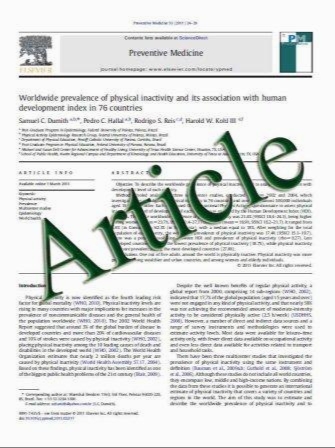New disposition for pain therapy in Italy, center for headache should be integrated in the network
- نوع فایل : کتاب
- زبان : انگلیسی
- مؤلف : Gian Franco Gensini
- چاپ و سال / کشور: 2011
Description
On March 15th 2010, Italy adopted the Law no. 38 ‘‘Disposizioni per garantire l’accesso alle cure palliative e alla terapia del dolore’’ (Provisions aimed at ensuring access to palliative care and pain therapy). The aim of pain therapy is to enable patients with chronic diseases to achieve pain control. Palliative care, as defined by the World Health Organization, aims at ‘‘improving the quality of life of patients and families, who face the problems associated with incurable diseases, through prevention and relief from suffering, achieved through an early identification and treatment of pain by pharmacological medication and other physical, psychosocial and spiritual techniques’’. The main issues addressed by the law concern the monitoring of pain (the doctors will have to record on the clinical report form every level of pain intensity suffered by the patient, the appropriate therapy administered, and the pain relief achieved. This report must be kept accurately in all settings: hospital, day hospital and in outpatients). The law also suggests the establishment of two kinds of regional networks. One network (including Hospices) ensures the administration of palliative care to terminally ill patients; the other, including clinics and centers of pain therapy, provides assistance to patients with chronic pain. These networks involve general practitioners, hospital specialists and pain therapy specialists in order to ensure the best patient care. Simplification of the prescription of opiate drugs is also included in the law. In the prescription of opiates, the National Health Service medical staff can use the normal prescription form, and opiates will reimbursed by the NHS, like all other drugs. In addition, the technical papers provide precise indications of the appropriate modality of administration. The law allocates (art. 12, paragraph 2) 100 million euros per year and € 2,450,000 in the biennium 2010–2011 to implement experimental regional projects: ‘‘hospital-territory without pain’’. The Ministry of Health has established a deadline within which this law must be implemented at the regional level, and further establishes a specific National Observatory, an annual report on the use of drugs in the treatment of pain, and other provisions. The levels of spending by region will also be monitored in compliance with this law; university courses and masters are required to update professionals involved in pain treatment. In July 2010, in Florence, during the interdisciplinary IMPACT 2010 summit, Institutions and Scientific Societies met to define the concrete implementation of Law No. 38, in terms of the arrangements to ensure access to palliative care and pain management. Subsequently, last November, a new meeting was held bringing together medical directors from public hospitals; further meetings are planned with Regional Health Authorities to reaffirm the importance of this law and to implement it. The most important molecules in the opioids are traditionally divided into two groups: weak and strong. Among the strong analgesics are morphine, methadone, buprenorphine, fentanyl, oxycodone, hydromorphone. Among the weak are codeine and tramadol, or opiates administered at low doses, such as oxycodone combined with acetaminophen. IMPACT’s aim is also to stimulate scientific association to consider with attention and continuous medical education on the appropriates of diagnosis and administration of these medications according to data flow sheets approved in Italy. Regarding the headaches, it should be noted that the law 38 cited above includes all forms of pain, and headaches should be integrated into the care networks. In this context, severalmulti-disciplinary professionals within the centers (hub and spoke) or territory (GPs, specialists from neurologists and other professionals involved) should be integrated to offer the best response to the needs of the citize
Neurol Sci (2011) 32 (Suppl 1):S67–S70 DOI 10.1007/s10072-011-0576-6


